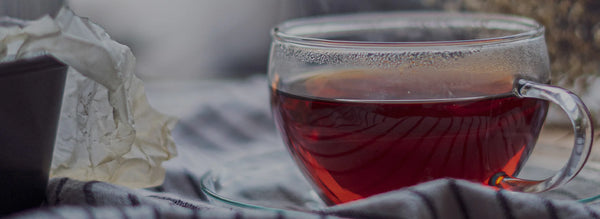How Is Black Tea Graded?
You may have only recently learned the many benefits of drinking black tea. As a result of what you’ve heard about black tea’s potential medicinal effects and its unique taste, you may be prompted to learn even more about this intriguing beverage. Consequently, you may be curious about how black tea is graded.
Tea Grading Defined for the Consumer
If you’re confused by the concept of tea grading, you’re certainly not alone. There are numerous misconceptions surrounding the process. First of all, there is really no standard method of tea grading. That means that grading can vary significantly from country to country and from region to region.
In addition, a particular grade does not guarantee quality or taste. If you want to know about a tea’s overall quality, you should consider where it’s grown, the elevation of the estate, the manner in which it was harvested, the process used to make it, and the type of tea involved.
Let’s now take a closer look at the grading of black teas.
The ABCs of Black Tea Grading
A grade is assigned to a black tea in relation to the size of the particle or leaf. The size of the leaf, in turn, frequently depends on how the tea has been harvested and processed. For instance, black tea may be processed according to what’s known as the Orthodox method. When the Orthodox method is used, the top tier of leaves and the bud are hand-plucked. When the leaves are fermented, the leaves are rolled in the initial phase of processing. If a harvester uses the Orthodox technique, the resulting leaves may represent a variety of sizes and grades.
The second method of processing black tea is known as CTC. This acronym stands for Crush, Tear, and Curl. The technique is considered to be more convenient and efficient than the Orthodox method. In this case, the tea leaves may be either plucked by hand or harvested by machinery.
The top tea grade is referred to as Tippy Golden Flowery Orange Pekoe. With this particular tea, the top leaves and bud are hand-plucked. The tea’s name is derived from the buds’ golden edge. If the letter “F” occurs before the name of the tea, that means that it is a finer grade; if the letters “SF” appear before the name, it means the tea is of a super-fine grade.
Meanwhile, the lowest possible grade is the Pekoe Dust variety, which is harvested and processed by using the CTC technique.
The grading system is typically used to describe teas originating in Africa, India, or Sri Lanka. Some Chinese teas may also be subjected to the grading system. Note that whole leaf teas are often more expensive and are frequently more pleasing to the eye. However, tea with smaller leaves may be more flavorful.
Contrasting Grading Styles
You should be aware of the fact that the grading method used for green and oolong teas tends to be different than that used for black tea. For instance, the grades assigned to green tea are often related to the tea’s overall quality and taste. How much you ultimately pay for green tea or oolong tea depends on the type of tea, the location that the tea leaves are grown in, and how the tea was harvested.
Also, the grading systems for green tea and oolong tea vary according to the country involved. For example, green teas grown in Japan are graded according to geography, style, and quality. Japanese grades tend to go by names such as extra choicest, finest fine, common, and nubs.
In China, green tea is graded in relation to the leaf’s age, style, and shape. Chinese grades are identified by names such as Pinhead and Pea Leaf. Meanwhile, green teas grown in India are known by leaf styles such as Young Hyson, Soumee, and Fannings.
Other Things to Consider
It should be noted that rare teas tend to have their own methods of grading. These would include Java green tea and scented oolong tea. The grades may also be divided into subcategories, making the grading system quite complex.
Given the fact that consumers have literally thousands of teas to choose from, you should be able to find a tea of a grade that appeals to you.
But, in order to be completely satisfied with your selection, it’s important that you use high-quality bottled water or water that has been properly filtered. The water should be brought to a boil and the tea should be steeped at least three minutes for proper preparation.
It is entirely possible to enjoy black tea without knowing anything about the grades involved. However, the more you know about black tea, the more you’ll come to realize how special it is. And that knowledge can only enhance your daily tea-drinking experience.













